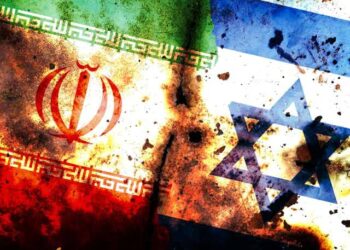US President Donald Trump announced that India and Pakistan have agreed to a full and immediate ceasefire following intense diplomatic efforts, including a “long night of talks” facilitated by the US.

This significant development marks a crucial step towards de-escalating the longstanding conflict in the Kashmir region. The agreement is a result of US-mediated talks between the two nations, bringing hope for a peaceful resolution.
The ceasefire agreement is seen as a positive step towards regional peace, with the international community watching closely for its implementation.
Key Takeaways
- A full and immediate ceasefire has been agreed upon by India and Pakistan.
- The agreement was facilitated through US-mediated talks.
- The ceasefire aims to de-escalate tensions in the Kashmir region.
- The development is seen as a step towards regional peace.
- The international community is closely monitoring the situation.

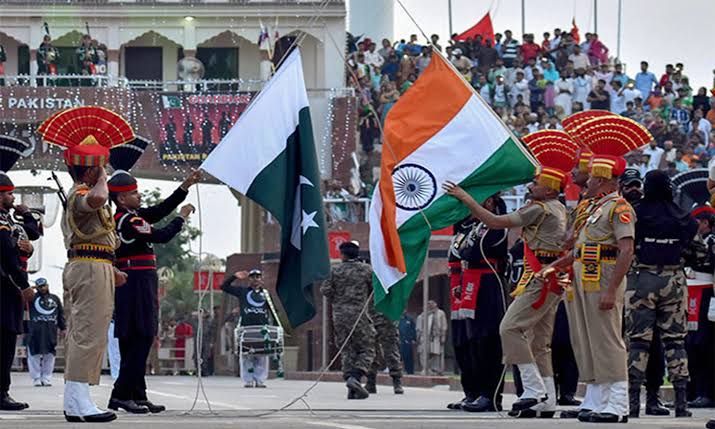
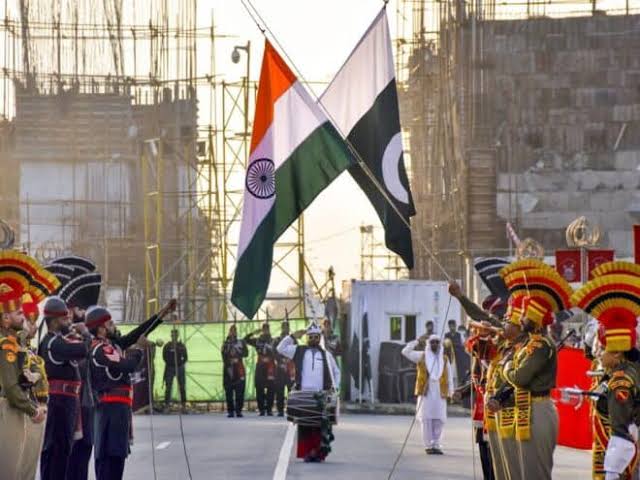
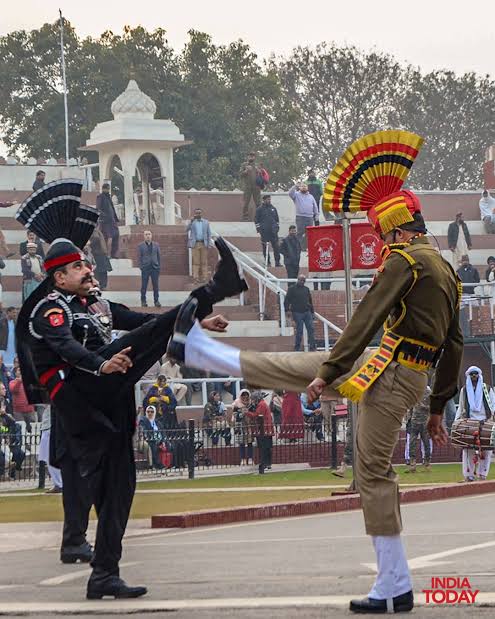
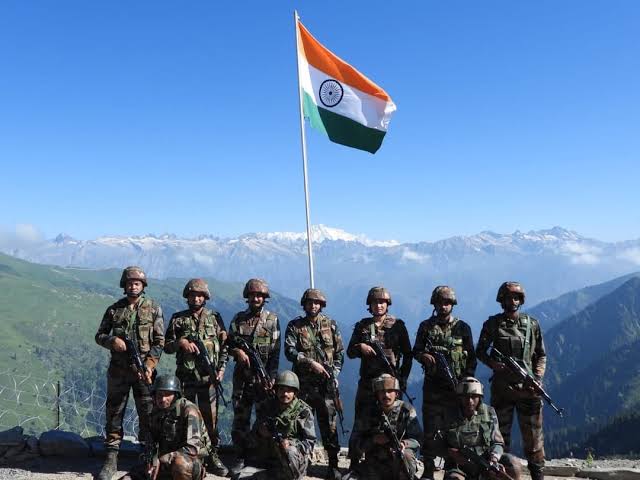
Recent Escalation Between Nuclear-Armed Neighbors
A terrorist attack on Indian tourists in Pahalgam, India-administered Kashmir, sparked a chain reaction of military responses between India and Pakistan. The attack, for which India blamed Pakistan, led to a significant escalation in tensions between the two nuclear-armed neighbors.
The Pahalgam Attack on Indian Tourists
The Pahalgam attack resulted in substantial casualties among the Indian tourists. Details of the attack and the subsequent response from both governments are crucial to understanding the escalation.
Details of the Attack and Casualties
The attack occurred on April 22, 2025, resulting in 26 casualties. The incident was widely condemned, and it led to a significant increase in military alertness along the Line of Control.
Initial Responses from Both Governments
India’s government swiftly condemned the attack, blaming Pakistan for supporting the terrorist groups responsible. Pakistan denied any involvement, leading to a war of words between the two nations.
India’s Military Operation in Pakistan and Pakistan-administered Kashmir
India launched a military operation targeting alleged terrorist camps in Pakistan and Pakistan-administered Kashmir. The operation aimed to dismantle the infrastructure used by terrorist groups.
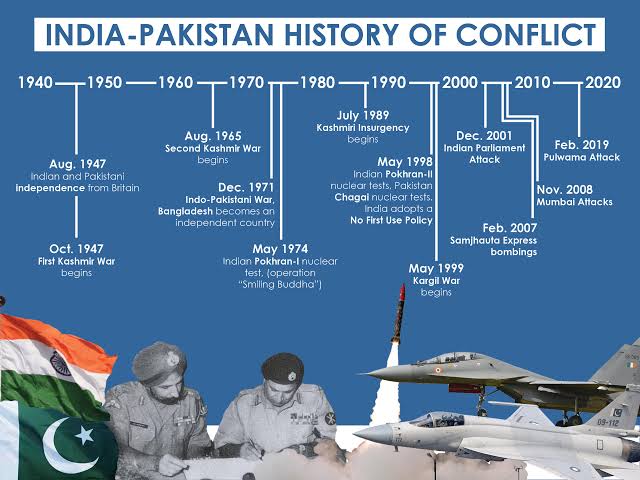
Targets and Strategic Objectives
The operation targeted key locations used by militant groups, with the strategic objective of disrupting their operational capabilities.
Pakistan’s Denial of Involvement in the Pahalgam Attack
Pakistan maintained that it was not involved in the Pahalgam attack, suggesting instead that internal unrest within India-administered Kashmir was the cause.
Accusations of Cross-border Shelling and Drone Attacks
Both countries accused each other of cross-border shelling and drone attacks, leading to further escalation.
Reported Incidents Along the Line of Control
Several incidents were reported along the Line of Control, resulting in military and civilian casualties.
Military and Civilian Casualties
The ongoing clashes resulted in significant casualties on both sides, including military personnel and civilians caught in the crossfire.
Breaking News: India Pakistan Ceasefire Kashmir Conflict Update US-mediated India Pakistan Talks
US President Donald Trump’s mediation efforts have borne fruit, with India and Pakistan announcing a ‘full and immediate ceasefire’. This development marks a significant step towards reducing tensions in the Kashmir region.
Announcement of the “Full and Immediate Ceasefire”
The joint statement released by India and Pakistan detailed the terms of the ceasefire, emphasizing the commitment of both nations to maintain peace along the Line of Control (LoC).
Joint Statement Details
The statement highlighted the mutual agreement to refrain from actions that could lead to escalation. Key provisions included:
- Immediate cessation of hostilities
- Restoration of peace along the LoC
- Commitment to dialogue
Timing of Implementation (17:00 Local Time/12:30 BST)
Indian Foreign Secretary Vikram Misri confirmed that the ceasefire began at 17:00 local time. This synchronized effort underscored the seriousness with which both nations approached the agreement.
Official Statements from Both Nations
Pakistan’s Deputy PM, Ishaq Dar, stated that Pakistan has “always strived for peace and security in the region.” This sentiment was echoed by Indian officials, who welcomed the ceasefire as a positive step forward.
India’s Foreign Secretary’s Confirmation
Vikram Misri’s statement reinforced India’s commitment to the ceasefire, emphasizing the importance of maintaining peace.
Pakistan’s Deputy PM on Regional Peace
Ishaq Dar’s comments highlighted Pakistan’s long-standing desire for regional stability, aligning with the goals of the ceasefire agreement.
Initial Hours After the Ceasefire
Reports from the border areas indicated a significant reduction in military activity. Verification of military compliance was conducted through various channels.
Reports from the Border Areas
Local reports suggested a calm atmosphere, with residents returning to normal activities.
Military Compliance Verification
Both nations engaged in verification processes to ensure adherence to the ceasefire terms.

US President Trump’s Role in Brokering Peace
In a breakthrough move, US President Donald Trump revealed that India and Pakistan had reached a ceasefire agreement following intense US-mediated talks. This significant development underscores the crucial role of diplomatic efforts in resolving longstanding conflicts.
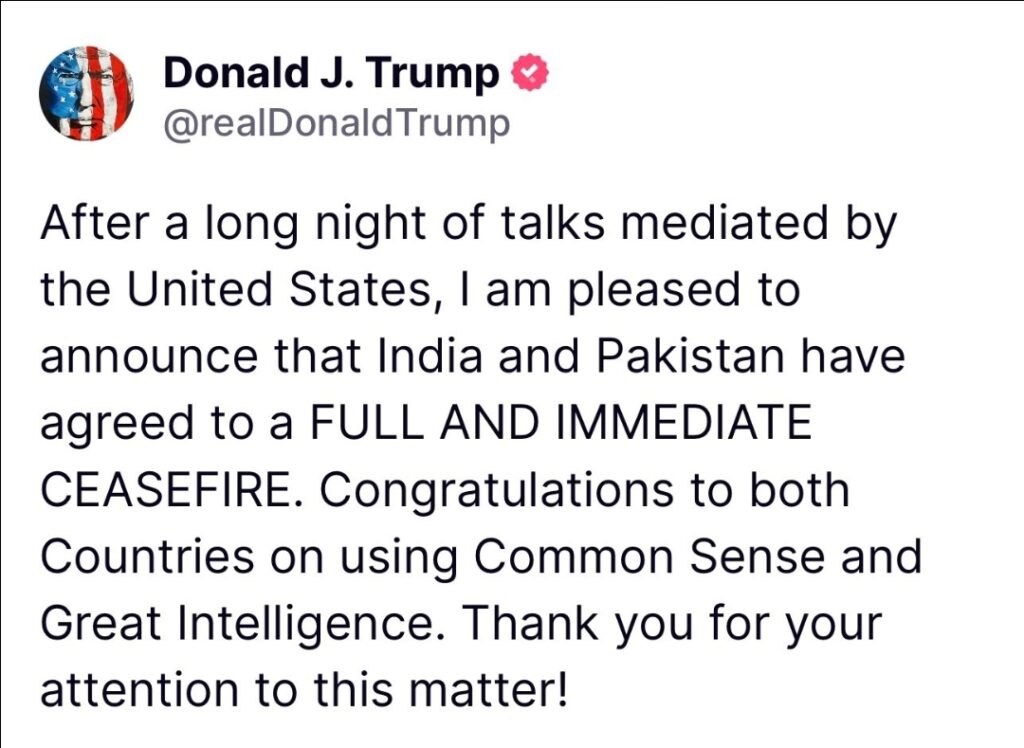
The “Long Night of Talks” Mediated by the United States
The ceasefire agreement was the result of a “long night of talks” facilitated by the United States. Behind-the-scenes diplomatic efforts involved key US officials, including Secretary of State Mike Pompeo and other senior diplomats, who engaged in intense negotiations with their Indian and Pakistani counterparts.
Behind-the-Scenes Diplomatic Efforts
These efforts were characterized by persistent communication and negotiation between the parties involved. US diplomats worked closely with senior officials from both India and Pakistan to address concerns and bridge the gap between the two nations.
Key US Officials Involved
Key US officials, including Vice President Mike Pence and Secretary of State Mike Pompeo, played pivotal roles in the diplomatic process, leveraging their relationships with Indian and Pakistani leaders to facilitate a peaceful resolution.
Trump’s Announcement on Social Media
President Trump announced the ceasefire agreement on social media, highlighting the success of his administration’s diplomatic initiatives. The timing and content of the statement were carefully considered to maximize impact and convey the significance of the agreement.
Content and Timing of the Statement
The announcement was made shortly after the agreement was finalized, with Trump using his Twitter platform to share the news with his followers. The immediate release of the information underscored the importance of the development.
Public Reaction to Trump’s Involvement
Public reaction to Trump’s involvement was mixed, with some praising his efforts to broker peace and others questioning the motivations behind his announcement. Nonetheless, the agreement was widely seen as a positive step towards reducing tensions in the region.
US Strategic Interests in South Asian Stability
The US has significant strategic interests in maintaining stability in South Asia, driven by both economic and security considerations. A peaceful resolution between India and Pakistan is seen as crucial to regional stability and aligns with US interests in the area.
Economic and Security Considerations
The economic implications of the conflict are significant, with both India and Pakistan standing to benefit from reduced tensions. From a security perspective, a ceasefire reduces the risk of escalation and promotes a more stable environment.
US-India and US-Pakistan Relations
The US maintains complex relationships with both India and Pakistan, balancing its strategic interests with diplomatic engagement. The ceasefire agreement reflects a nuanced approach to these relationships, aimed at promoting peace and stability.
Detailed Responses from India and Pakistan
The recent ceasefire agreement between India and Pakistan has elicited varied responses from both nations. The diplomatic efforts and official statements from both countries highlight their commitment to peace and stability in the region.
India’s Official Position
India’s response to the ceasefire has been cautiously optimistic. The government’s official stance emphasizes the importance of maintaining peace along the border.
Foreign Ministry Statements
The Indian Foreign Ministry has issued statements reaffirming the country’s commitment to bilateral talks and peaceful resolution of disputes. Key excerpts from these statements highlight the significance of the ceasefire in fostering a conducive environment for dialogue.
Military Leadership Response
India’s military leadership has welcomed the ceasefire, stressing the need for continued vigilance along the border. The response underscores the complexities of maintaining peace in a region with a history of conflict.
Pakistan’s Diplomatic Stance
Pakistan’s diplomatic efforts have been geared towards ensuring the ceasefire’s success, with a focus on international cooperation and bilateral dialogue.
Deputy PM’s Statement on “Always Striving for Peace”
Pakistan’s Deputy Prime Minister has made public statements emphasizing the country’s commitment to peace, stating that Pakistan is “always striving for peace” with its neighbors.
“We have always believed in resolving disputes through dialogue,” the Deputy PM said, highlighting Pakistan’s diplomatic stance.
Military and Government Coordination
The coordination between Pakistan’s military and government has been crucial in implementing the ceasefire. Efforts to maintain communication and cooperation between the two entities are seen as vital to the ceasefire’s success.
Domestic Political Reactions in Both Countries
The ceasefire has elicited a range of reactions from political parties and the public in both India and Pakistan.
Opposition Parties’ Responses
In both countries, opposition parties have raised questions about the government’s handling of the ceasefire and its implications for national security.
- In India, opposition leaders have sought clarifications on the government’s strategy.
- In Pakistan, political parties have expressed a mix of support and skepticism regarding the ceasefire.
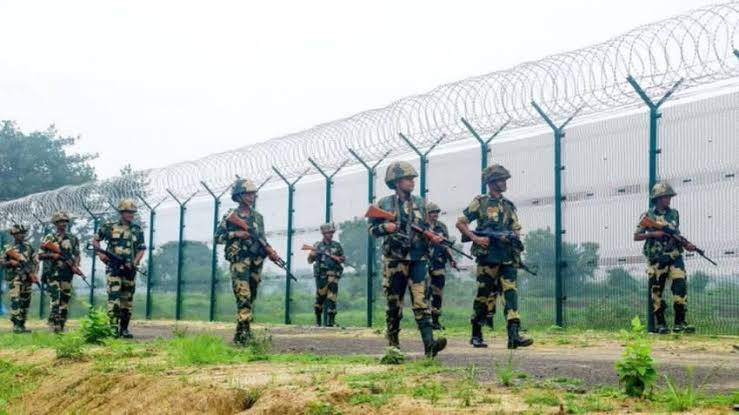
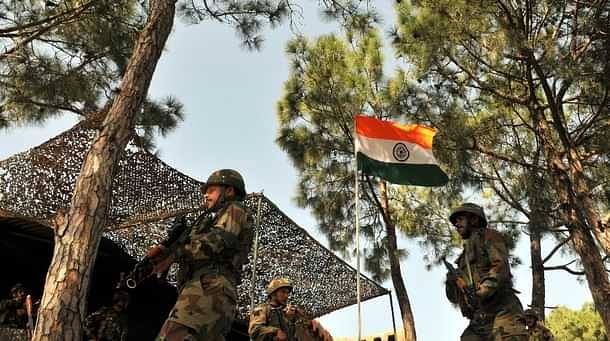
Public Opinion and Media Coverage
Public opinion in both countries remains divided, with some segments welcoming the ceasefire as a step towards peace, while others express concerns about its sustainability.

Media coverage has been extensive, with analyses focusing on the potential impact of the ceasefire on regional stability.
The Kashmir Dispute: Understanding the Conflict
The historical context of the Kashmir dispute is crucial to understanding the current tensions between India and Pakistan. The roots of this conflict date back to the partition of India in 1947, when the British Indian Empire was divided into two separate nations: India and Pakistan.
Historical Context of India-Pakistan Tensions
The partition led to one of the largest mass migrations in history, with significant violence and loss of life. Kashmir, a princely state with a Muslim majority but ruled by a Hindu king, became a point of contention.
Partition and the First Kashmir War
The decision of the Maharaja of Kashmir to accede to India led to a tribal invasion backed by Pakistan, resulting in the first Kashmir war. This conflict ended with the establishment of the Line of Control (LOC), which has since become a de facto border.
Subsequent Conflicts and Agreements
Since then, there have been several conflicts and attempts at peace agreements, including the Simla Agreement in 1972 and the ceasefire of 2003. However, tensions have persisted, with periodic escalations.
Territorial Claims and the Line of Control
The Line of Control divides the Kashmir region into areas controlled by India, Pakistan, and China. Both India and Pakistan claim the entirety of Kashmir, leading to ongoing tensions.
Areas Controlled by Each Country
| Country | Area Controlled |
|---|---|
| India | Jammu and Kashmir |
| Pakistan | Azad Kashmir and Gilgit-Baltistan |
| China | Aksai Chin |
Strategic Importance of Kashmir
Kashmir is not only significant for its natural beauty but also for its strategic location, bordering China and having crucial water resources.
Recent History of Ceasefire Violations
Despite the 2003 ceasefire, violations along the LOC have continued, causing civilian casualties and military tensions.
Major Incidents Since 2019
Since 2019, there have been significant incidents, including the Pahalgam attack, which highlighted the ongoing security challenges.
“The situation in Kashmir remains volatile, with both sides accusing each other of ceasefire violations.”
Civilian Impact in the Disputed Region
The conflict has had a devastating impact on civilians, with thousands displaced and many more affected by the ongoing violence.
Terms and Mechanisms of the Ceasefire Agreement
The India-Pakistan ceasefire agreement has been hailed as a breakthrough, but the intricacies of its terms and mechanisms are crucial to understanding its potential success. The agreement includes several key provisions aimed at stabilizing the region and preventing future escalations.
Key Provisions and Commitments
The ceasefire agreement encompasses several critical elements, including military disengagement protocols and the establishment of communication channels between forces. These provisions are designed to reduce tensions and prevent accidental clashes.
Military Disengagement Protocols
The military disengagement protocols involve the withdrawal of troops from forward positions and the establishment of buffer zones to prevent direct confrontations. This measure is expected to significantly reduce the risk of ceasefire violations.
Communication Channels Between Forces
Effective communication between the military forces of India and Pakistan is crucial for the success of the ceasefire. Establishing direct communication channels allows for the immediate resolution of misunderstandings and prevents minor incidents from escalating.
Monitoring and Verification Processes
To ensure compliance with the ceasefire agreement, robust monitoring and verification processes are being implemented. These include the deployment of military observers and the use of advanced technology and surveillance methods.
Role of Military Observers
Military observers play a vital role in monitoring the ceasefire on the ground. They report any violations and facilitate communication between the two militaries, helping to resolve disputes quickly.
Technology and Surveillance Methods
Advanced surveillance technology, including drones and satellite imagery, is being utilized to monitor the Line of Control (LoC) and detect any potential ceasefire violations. This technological support enhances the effectiveness of the monitoring process.

Comparison with Previous Ceasefire Attempts
The current ceasefire agreement draws lessons from past attempts, including the 2003 Agreement. Understanding the successes and failures of previous ceasefires helps in crafting a more effective and sustainable peace agreement.
The 2003 Agreement and Its Implementation
The 2003 ceasefire agreement between India and Pakistan was a significant attempt at reducing tensions along the LoC. While it had initial successes, it ultimately faced challenges that led to its breakdown.
Lessons Applied to the Current Ceasefire
The current agreement incorporates lessons learned from the 2003 attempt, including the importance of robust monitoring mechanisms and clear communication channels. These elements are crucial for the long-term success of the ceasefire.
Global Reactions to the India-Pakistan Ceasefire
The ceasefire between India and Pakistan has sparked a mix of cautious optimism and diplomatic engagement from major world powers and international organizations. This development has been closely watched by the global community, given the history of tensions and conflicts between the two nuclear-armed neighbors.
Responses from Major World Powers
Major world powers have responded to the ceasefire with a combination of statements and diplomatic initiatives. The United States, in particular, has played a significant role in brokering the ceasefire, with US President Trump’s administration actively engaging with both India and Pakistan to ease tensions.
China, Russia, and European Union Statements
China, a key ally of Pakistan, has welcomed the ceasefire, emphasizing the need for continued diplomatic efforts to resolve the Kashmir dispute. Russia has also supported the ceasefire, calling for restraint and dialogue between the two nations. The European Union has issued a statement expressing relief at the ceasefire and urging both countries to maintain the momentum towards peace.
Regional Powers’ Perspectives
Regional powers, including Afghanistan and Iran, have also commented on the ceasefire. Afghanistan, having experienced its own share of conflict, has welcomed the move, seeing it as a positive step towards regional stability. Iran, while traditionally aligned with India on certain issues, has called for a peaceful resolution to the Kashmir conflict.
United Nations and International Organizations
The United Nations has been closely monitoring the situation, with the UN Secretary-General issuing a statement welcoming the ceasefire and reiterating the UN’s commitment to supporting peace efforts in the region.
UN Secretary-General’s Response
The UN Secretary-General has emphasized the importance of continued dialogue and cooperation between India and Pakistan, highlighting the UN’s role in facilitating peace processes.
Security Council Discussions
The UN Security Council has held discussions on the situation, with members expressing support for the ceasefire and encouraging both nations to work towards a lasting resolution to their differences.
Impact on Regional Alliances and Partnerships
The ceasefire is expected to have implications for regional alliances and partnerships, including the South Asian Association for Regional Cooperation (SAARC). A more stable India-Pakistan relationship could potentially revitalize regional cooperation and economic integration.
SAARC and Other Regional Forums
SAARC, which has been dormant due to India-Pakistan tensions, may see a resurgence in activity, with member states potentially re-engaging in regional initiatives. Other regional forums may also benefit from the improved bilateral relations.
Economic and Trade Implications
A sustained ceasefire could lead to increased economic cooperation and trade between India and Pakistan, benefiting not just the two nations but the broader region. Enhanced economic ties could also contribute to a more stable and peaceful South Asia.
Humanitarian Impact and Civilian Relief
The ceasefire between India and Pakistan has brought a wave of relief to border communities, who have long suffered the consequences of cross-border tensions.
Conditions in Border Communities Before the Ceasefire
Before the ceasefire, border communities faced dire conditions, including displacement and infrastructure damage due to relentless cross-border fire.
Displacement and Infrastructure Damage
The constant shelling led to significant displacement, with many families forced to flee their homes. Infrastructure, including schools, hospitals, and homes, suffered extensive damage.
Daily Life Under Cross-border Fire
Daily life was a struggle, with residents living in constant fear of attacks. Basic necessities like healthcare and education were severely impacted.
Immediate Benefits of the Ceasefire
The ceasefire has allowed for the return of displaced persons and the resumption of normal activities, bringing much-needed stability to the region.
Return of Displaced Persons
Many families have begun to return to their homes, starting the process of rebuilding their lives.
Resumption of Normal Activities
With the ceasefire in place, daily activities such as farming, trade, and education have resumed, revitalizing local economies.
Long-term Humanitarian Considerations
While the ceasefire is a positive step, long-term humanitarian considerations, including rebuilding infrastructure and addressing the psychological impact on border populations, remain crucial.
Rebuilding Infrastructure
Efforts to rebuild damaged infrastructure are underway, aiming to restore basic services and support economic recovery.
Psychological Impact on Border Populations
The psychological trauma experienced by border communities will require sustained support and counseling to overcome.
| Aspect | Pre-Ceasefire | Post-Ceasefire |
|---|---|---|
| Displacement | Significant displacement due to cross-border fire | Return of displaced persons |
| Infrastructure | Extensive damage to homes, schools, and hospitals | Rebuilding efforts underway |
| Daily Life | Constant fear, disrupted basic services | Resumption of normal activities |

Challenges to Sustaining Peace
The ceasefire between India and Pakistan has raised hopes for peace, but several factors could potentially undermine its longevity. Sustaining peace in the region requires addressing historical patterns of ceasefire breakdown, the influence of non-state actors, and domestic political pressures.
Historical Patterns of Ceasefire Breakdown
Previous ceasefire agreements between India and Pakistan have often faltered due to various triggers. Understanding these patterns is crucial to sustaining the current peace.
Previous Failed Agreements
Several ceasefire attempts have been made in the past, but most have been short-lived. The reasons for their failure provide valuable lessons for the current agreement.
Triggers for Renewed Hostilities
Renewed hostilities have often been triggered by incidents along the Line of Control (LoC) or by militant activities. Identifying and mitigating these triggers is essential for lasting peace.
Role of Non-state Actors and Militant Groups
Non-state actors, including militant groups operating in Kashmir, pose a significant challenge to the ceasefire. Their actions can potentially disrupt the fragile peace.
Terrorist Organizations Operating in Kashmir
Groups like Lashkar-e-Taiba and Jaish-e-Mohammed continue to operate in the region, posing a threat to the ceasefire. Efforts to curb their activities are crucial.
Potential for Spoiler Actions
Militant groups may attempt to spoil the ceasefire for their own gains, necessitating vigilant monitoring and swift action from both governments.
Domestic Political Pressures
Domestic political considerations in both India and Pakistan can impact the sustainability of the ceasefire. Nationalist sentiments and electoral considerations play significant roles.
Nationalist Sentiments in Both Countries
Strong nationalist sentiments in both countries can influence public opinion and government decisions, potentially affecting the ceasefire’s longevity.
Electoral Considerations for Leaders
Leaders in both countries must balance their diplomatic efforts with domestic electoral pressures, making the maintenance of peace a challenging task.
The US role in brokering the ceasefire has been significant, with diplomatic efforts helping to bring both nations to the negotiating table. The latest developments in the India-Pakistan Kashmir conflict indicate a cautious optimism, but the question remains whether the ceasefire is permanent or temporary.
| Challenges | Description | Impact on Ceasefire |
|---|---|---|
| Historical Patterns | Previous ceasefires have failed due to various reasons | High risk of failure if not addressed |
| Non-state Actors | Militant groups operating in Kashmir | Potential to disrupt peace |
| Domestic Pressures | Nationalist sentiments and electoral considerations | Influence government decisions and public opinion |
Conclusion: Prospects for Lasting Peace in South Asia
The recent ceasefire agreement between India and Pakistan marks a significant step towards peace in the region, following a period of heightened tensions and recent escalation. The agreement, brokered with the help of the United States, has brought a measure of calm to the disputed Kashmir region, easing concerns about the potential for a wider conflict.
Understanding the india pakistan conflict timeline is crucial in assessing the prospects for lasting peace. The history of tensions, including territorial disputes and ceasefire violations, has long complicated bilateral relations. While the current ceasefire is a positive development, lasting peace will depend on sustained diplomatic efforts and addressing underlying issues.
The immediate benefits of the ceasefire are evident, with a reduction in violence and a decrease in humanitarian suffering. However, the challenges ahead are significant, including historical patterns of ceasefire breakdown and the role of non-state actors. To achieve lasting peace, both nations must commit to a sustained dialogue, addressing the root causes of the conflict.
The international community, including major world powers and the United Nations, has a role to play in supporting this process. As India and Pakistan navigate the complexities of their bilateral relations, the prospects for lasting peace in South Asia will depend on their ability to maintain the ceasefire and work towards a more comprehensive resolution.
FAQ
What triggered the recent escalation between India and Pakistan?
The recent escalation between India and Pakistan was triggered by the Pahalgam attack on Indian tourists, followed by India’s military operation in Pakistan-administered Kashmir, and subsequent accusations of cross-border shelling and drone attacks.
What are the key provisions of the ceasefire agreement between India and Pakistan?
The ceasefire agreement includes a “full and immediate ceasefire” along the Line of Control, with both countries committing to refrain from military operations and shelling. The agreement also involves monitoring and verification processes to ensure compliance.
How did US President Donald Trump contribute to the ceasefire agreement?
US President Donald Trump played a significant role in brokering the ceasefire agreement through intense diplomatic efforts, including a “long night of talks” facilitated by the US. Trump announced the agreement on social media, highlighting the US’s strategic interests in maintaining stability in South Asia.
What are the humanitarian implications of the ceasefire agreement?
The ceasefire agreement is expected to bring immediate relief to border communities, reducing the risk of military and civilian casualties, displacement, and infrastructure damage. Long-term humanitarian considerations include rebuilding damaged infrastructure and addressing the psychological impact on border populations.
What are the challenges to sustaining peace between India and Pakistan?
Historical patterns of ceasefire breakdown, the role of non-state actors and militant groups, and domestic political pressures are significant challenges to sustaining peace between India and Pakistan. Previous failed agreements and triggers for renewed hostilities also pose a threat to lasting peace.
How has the international community reacted to the ceasefire agreement?
The international community, including major world powers and international organizations like the United Nations, has welcomed the ceasefire agreement, highlighting its potential to reduce tensions and promote regional stability.
What is the historical context of the Kashmir dispute?
The Kashmir dispute has its roots in the territorial claims and historical tensions between India and Pakistan, dating back to the partition of British India. The Line of Control has been a focal point of conflict, with both countries claiming sovereignty over the region.
Will the ceasefire agreement have a positive impact on regional alliances and partnerships?
The ceasefire agreement is expected to have a positive impact on regional alliances and partnerships, such as SAARC, by reducing tensions and promoting a more stable environment for economic and trade cooperation.
Is the India-Pakistan ceasefire agreement permanent or temporary?
The permanence of the ceasefire agreement remains to be seen, as it depends on the sustained commitment of both countries to refrain from military operations and shelling, as well as the effectiveness of monitoring and verification processes.
What are the potential economic and trade implications of the ceasefire?
The ceasefire agreement is expected to have positive economic and trade implications, as reduced tensions and increased stability can promote trade and investment between India and Pakistan, as well as with other regional partners.




































